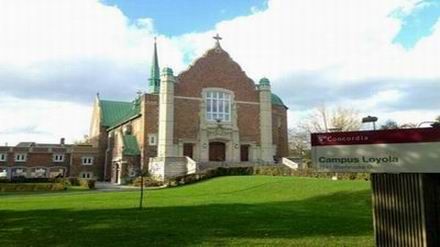在10号托福考试的阅读中,内容偏向于生物自然科学的多,科普类型的材料比较多,而且篇幅也比较大,生单词出现的也多,所以托福培训网建议考试之前所准备些生物自然方面的,多多练习。
第一篇: EARTH AGE
第一篇是讲的早期科学家们估计地球寿命。
首先说人们很早就在预估地球寿命了;之后一段讲的近代一位科学家采用生物一代代进化速度的方式预估了三叠纪的长度,但基于的假设是进化速率基本相同,其估计已经有一定准确度了。后来讲科学家利用这种方式预估地球寿命,其弱点是有部分化石找不到而且更基本的错误是地球在生物诞生之前那段时间无法估计。(这里有插空题)之后讲了科学家用其他方式预估,有种是采用测算地壳沉积岩石厚度的方法,但问题是没有考虑板块运动以及腐蚀。另一种是计算海水盐度发,理想地认为一开始地球海洋是淡水,不断地填充盐才有了现在这样子,但这也忽略了盐分与海底大陆架之间的复杂作用以及其他(这里会考题问科学家忽略了什么)。但作者对于科学家基于盐度推出的几千万年的寿命还是给予肯定的。因为这已经验证了地球寿命远比原先预计的几百万年要多得多。而且也有一批科学家从其他领域验证了这个结果。
The age of the Earth is 4.54 ± 0.05 billion years.This age is based on evidence from radiometric age dating of meteorite material and is consistent with the ages of the oldest-known terrestrial and lunarsamples. Following the scientific revolution and the development of radiometric age dating, measurements of lead in uranium-rich minerals showed that some were in excess of a billion years old.
Because the exact accretion time of Earth is not yet known, and the predictions from different accretion models range from a few millions up to about 100 million years, the exact age of Earth is difficult to determine. It is also difficult to determine the exact age of the oldest rocks on Earth, exposed at the surface, as they are aggregates of minerals of possibly different ages.
【岩层研究法】Studies of strata, the layering of rocks and earth, gave naturalists an appreciation that Earth may have been through many changes during its existence. These layers often contained fossilized remains of unknown creatures, leading some to interpret a progression of organisms from layer to layer.
In the 1790s, the British naturalist William Smith hypothesized that if two layers of rock at widely differing locations contained similar fossils, then it was very plausible that the layers were the same age. William Smith's nephew and student, John Phillips, later calculated by such means that Earth was about 96 million years old.
The naturalist Mikhail Lomonosov, regarded as the founder of Russian science, suggested in the mid-18th century that Earth had been created separately from the rest of the universe, several hundred thousand years before. Lomonosov's ideas were mostly speculative, but in 1779, the French naturalist the Comte du Buffon tried to obtain a value for the age of Earth using an experiment: He created a small globe that resembled Earth in composition and then measured its rate of cooling. This led him to estimate that Earth was about 75,000 years old
In 1862, the physicist William Thomson (who later became Lord Kelvin) of Glasgow published calculations that fixed the age of Earth at between 20 million and 400 million years. He assumed that Earth had formed as a completely molten object, and determined the amount of time it would take for the near-surface to cool to its present temperature. His calculations did not account for heat produced via radioactive decay (a process then unknown to science) or convection inside the Earth, which allows more heat to escape from the interior to warm rocks near the surface.
【生物进化方法】Geologists had trouble accepting such a short age for Earth. Biologists could accept that Earth might have a finite age, but even 100 million years seemed much too short to be plausible. Charles Darwin, who had studied Lyell's work, had proposed his theory of the evolution of organisms by natural selection, a process whose combination of random heritable variation and cumulative selection implies great expanses of time. (Geneticists have subsequently measured the rate of genetic divergence of species, using the molecular clock, to date the last universal ancestor of all living organisms no later than 3.5 to 3.8 billion years ago)。
In a lecture in 1869, Darwin's great advocate, Thomas H. Huxley, attacked Thomson's calculations, suggesting they appeared precise in themselves but were based on faulty assumptions. The German physicist Hermann von Helmholtz (in 1856) and the Canadian astronomer Simon Newcomb (in 1892) contributed their own calculations of 22 and 18 million years respectively to the debate: they independently calculated the amount of time it would take for the Sun to condense down to its current diameter and brightness from the nebula of gas and dust from which it was born. Their values were consistent with Thomson's calculations. However, they assumed that the Sun was only glowing from the heat of its gravitational contraction. The process of solar nuclear fusion was not yet known to science.
Other scientists backed up Thomson's figures as well. Charles Darwin's son, the astronomer George H. Darwin of the University of Cambridge, proposed that Earth and Moon had broken apart in their early days when they were both molten. He calculated the amount of time it would have taken for tidal friction to give Earth its current 24-hour day. His value of 56 million years added additional evidence that Thomson was on the right track.
【Radiometric dating同位素年龄测定法】Rockminerals naturally contain certain elements and not others. By the process of radioactive decay of radioactive isotopes occurring in a rock, exotic elements can be introduced over time. By measuring the concentration of the stable end product of the decay, coupled with knowledge of the half life and initial concentration of the decaying element, the age of the rock can be calculated. Typical radioactive end products are argon from potassium-40 and lead from uranium and thorium decay. If the rock becomes molten, as happens in Earth's mantle, such nonradioactive end products typically escape or are redistributed.Thus the age of the oldest terrestrial rock gives a minimum for the age of Earth assuming that a rock cannot have been in existence for longer than Earth itself.Modern radiometric dating




 湘公网安备 43011102001150号
湘公网安备 43011102001150号

